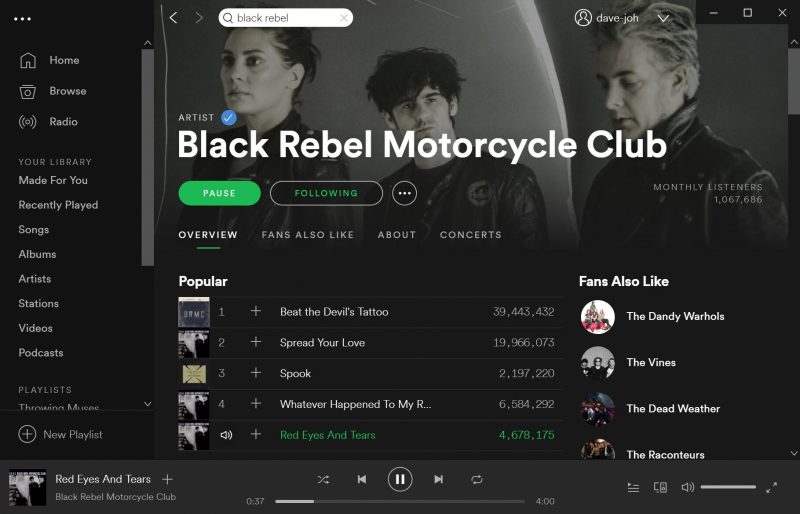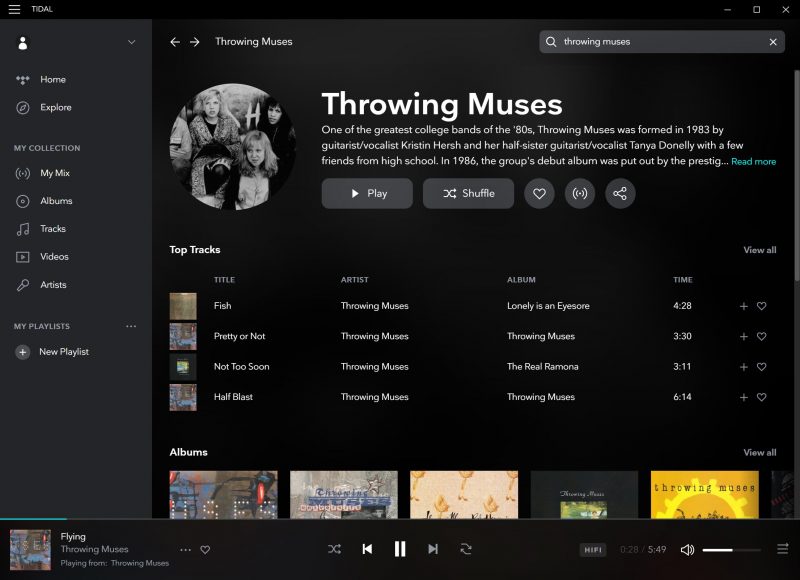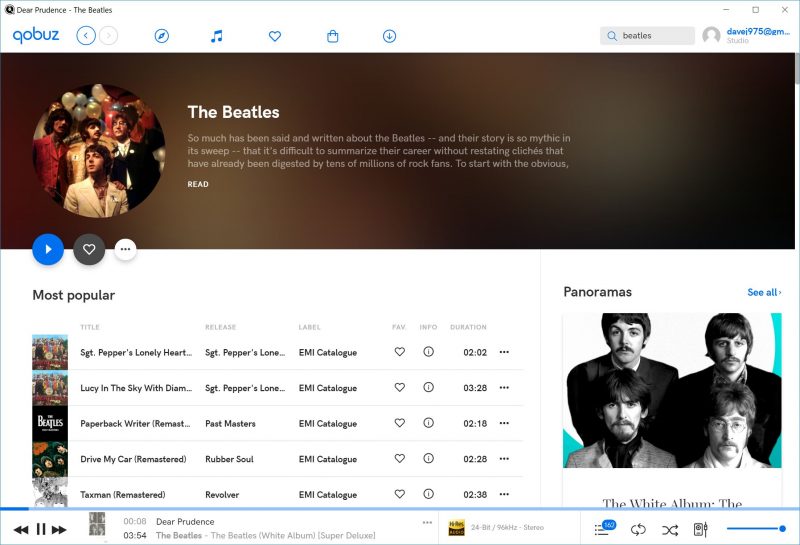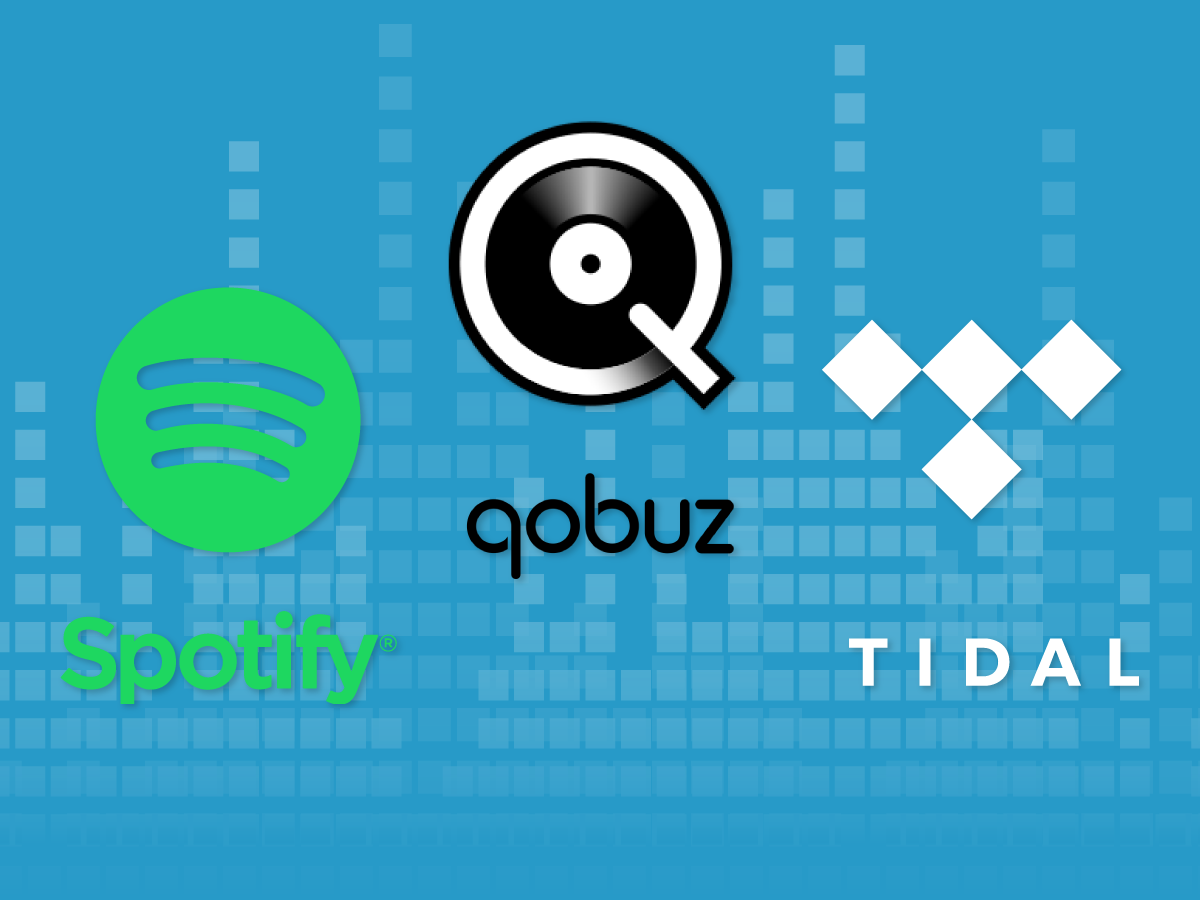- For music lovers, sound quality is one of the most important things a streaming service can offer.
- Qobuz, a music app that’s new to the US, claims to stream music with sound quality nearly thirty times better than Spotify‘s.
- We compared Qobuz’s sound with Spotify’s and Tidal’s, and found that while the difference was noticeable from track to track, it might not be worth the extra cost.
Are you happy with the sound quality of your music streaming app? You might not think much about it. But audiophiles are always on the hunt for better sound quality, and a new streaming service has debuted, offering to deliver it. Qobuz, new to the US, supports much higher audio quality – according to the company, as much as 29 times better than Spotify.
High resolution audio is nothing new. In the last decade, formats like DVD-Audio and SACD have promised sound quality far surpassing anything on CD, but they largely failed because they were inconvenient compared to CD playing. A few years ago, musician Neil Young tried again with Pono, a combination music player and music service, but not enough people wanted to lock themselves into a special music player, regardless of the superior sound quality it offered.
Qobuz is different, though – it delivers (depending upon the track), high quality MP3s, CD-quality music, and 24-bit lossless tracks just as conveniently as Spotify and Tidal deliver their respective sounds.
So we put all three streaming services to the test to see if there was any noticeable advantage to using Qobuz.
Spotify
You already know Spotify, which has been around since 2008. You can use the free, ad-supported version to listen to the roughly 30 million tracks, even if you don't pony up $10 per month for Spotify Premium. Spotify Free lets you listen at 160 kbps, but Premium adds the option to play music at 320 kbps, which is the highest quality level that MP3s can be encoded at.

Tidal
Tidal is a newer streaming service, launched in 2014 by the Norwegian company Aspiro and "re-launched" by Jay-Z in 2015. There's no free-play version of Tidal, but in addition to the standard $10/month subscription, there's also a $20 per month premium service that includes access to some FLAC-format lossless tracks.

Qobuz
The new kid on the block, Qobuz has some catching up to do. The service costs a premium, literally: access to everything including the high-res content (FLAC 24-Bit up to 192 KHz) starts at $24.99 per month (CD-quality only is $20 per month, and MP3-only is $10 per month). And while the company claims to have about 40 million CD-quality tracks and a couple of million hi-res songs, the library sometimes feels barren when searching for popular artists.
While preparing to compare the audio quality of the three services, we had to veto a few songs because they weren't yet available on Qobuz. If you're a fan of indie music, be especially wary. Searches for alt rock bands like Throwing Muses and Downpilot turn up few-to-no tracks.

Qobuz definitely sounds better than Spotify on most songs
It's one thing for Qobuz to say it's 29 times better than Spotify - but can you really hear the difference?
To find out, we tested 10 songs that spanned a range of musical styles. Two test subjects (myself, and fellow tech journalist John Lyon) got to hear each song once - the highest-quality versions of Spotify, Tidal, and Qobuz - through a pair of high-quality headphones without knowing which version was which.
The result? Qobuz noticeably outperformed the others as we picked Qobuz as our favorite in "blind" testing a surprising 75% of the time.
I'll be honest: I didn't expect Qobuz to fare that well. Not because I didn't trust that its audio was high quality, but because I didn't think it would matter very much. I suspected that Spotify and Tidal sound "good enough," and it would be hard to really hear the difference. And while there's some truth to that, Qobuz really did pop.
Listening to Leonard Bernstein's performance of "The Death of Ase," John heard the Qobuz version immediately after Tidal and exclaimed, "Wow, that was a much more interesting song than it seemed the first time!" About Led Zeppelin's "When the Levee Breaks," I observed that the song opened up with a much wider soundstage than either Tidal or Spotify, making the reverberating drums all the more impressive. BRMC's "Beat the Devil's Tattoo" features percussive finger-snaps in the background; John marveled that unlike the others, Qobuz's version was "super-clean. The snaps actually sounded fleshy."
But we're not sure Qobuz is worth the money
Qobuz didn't win first place for every song, however, and Spotify and Tidal jockeyed for first and second place from song to song. (A few times, like in the Beach Boy's remastered mono version of "God Only Knows," Spotify actually took the top spot over Qobuz, which John described as "blasting me unpleasantly in the forehead.")
What's the lesson? Yes, Qobuz does generally deliver better sound, and if that's your priority, this is the service for you.
But it's a closer race than Qobuz's "29 times better than Spotify" claim might suggest. Really hearing - and appreciating - the difference between Qobuz and the competition requires active listening, and that's not how we usually consume music. When I let Qobuz fade into the background, it became easy to miss the nuances that make it special. I suspect that might be why Qobuz fell out of first place a few times; the differences in quality were sometimes subtle, and it was easy to lose track of why one track excelled over another.
If you aren't the sort of listener who pays complete attention to your music, then the decision to subscribe might come down to other factors, like cost, the variety of the music catalog, or whether it contains your favorite artists.

